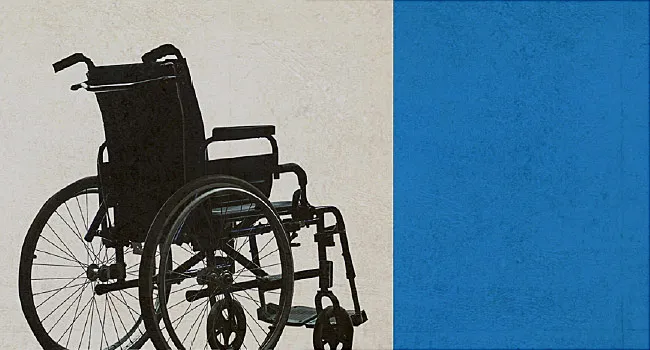Nov. 9, 2021 — In July, close to a dozen artists and creatives in the (SMA) community gathered virtually for a brainstorming session hosted by Genentech, a San Francisco-based biotechnology company.
Genentech runs a program called that causes weak muscles and can make it hard to breathe, walk, or sit up straight without assistance. It affects over 25,000 Americans and is the No. 1 cause of genetic death in infants.
The group collaborated to create the newly released single, “Spaces,” written and sung by James Ian, a musician and actor with SMA, and a music video, sponsored by Genentech.
“Genentech listened closely to members of the SMA community and heard reoccurring themes — that people with disabilities are underrepresented or misrepresented in media and social media,” says Michael Dunn, senior director of marketing at Genentech.
“They wanted to be known for their talents, not defined by their disabilities.”
Dominick Evans, who directed the “Spaces” music video, says the big-budget project proves that people with disabilities can be competitive in the media industry.
Evans, who has SMA, directed the entire video from his bed due to mobility restraints.
“How many prevalence of disability in the U.S. population and thus among the Netflix audience,
this is an area where this entertainment company can seek to increase authentic representation — and can lead its industry peers toward greater inclusion of this community,” the report states.
In response to the study, Netflix cerebral palsy.
Cerebral palsy is a disease that makes up several disorders. “Cerebral” refers to the brain, and “palsy” refers to problems with your muscles. The disease can affect your ability to move and maintain your balance.
The film explores the relationship dynamics between a stand-up comedian with cerebral palsy (Justvig) his wife, who is non-disabled, and her unsupportive mother.
Disability attorney and DiMe founder Jennifer Price surgery at age 5, which caused brain damage, ultimately leading to cerebral palsy.
She partners with various brands on social media, including Tommy Hilfiger and CeraVe, many of which are looking to reach the disability community in their products and marketing.
In a recent post, Carozzo challenged her over 17,500 followers who call her an “inspiration” to really dig deep and ask themselves why they feel that way.
“People have been brainwashed to see struggle, to see defeat, to see all these things as inspiration, that’s fine, but maybe it is time to redefine it,” Carozzo says.
“To me, it’s not inspiring that I don’t have an elevator to get somewhere and I have to struggle 30 floors up to get to where I need to be.”
Carozzo says she feels most rewarded when her content inspires people to stand up for the disability community in their own unique way.
“I receive DMs [direct messages] all the time, like ‘I saw somebody park in a disability spot. They didn’t have the placard, so I went and asked them if they should be parked here,’” Carozzo says.
“To me, that is a lot bigger than a brand deal and a paycheck.”
Combining personal gifts and talents with advocacy seems to be what many creatives with disabilities share in common.
“Spaces” is a great example.
“That one line — ‘If there’s one thing you’ll see, it’s my humanity’ — I think that’s the one thing that we all wanted to be the first thing that people would notice about us,” says “Spaces” singer James Ian.
“People with disabilities belong in all the spaces that non-disabled people occupy as well, whether that’s the leading role in a major film, or the lead singer of a huge, successful song.”
